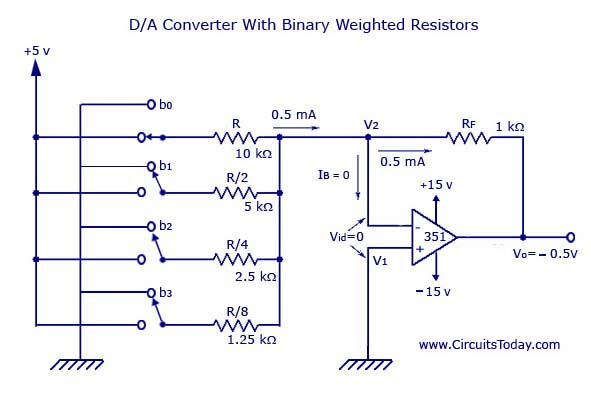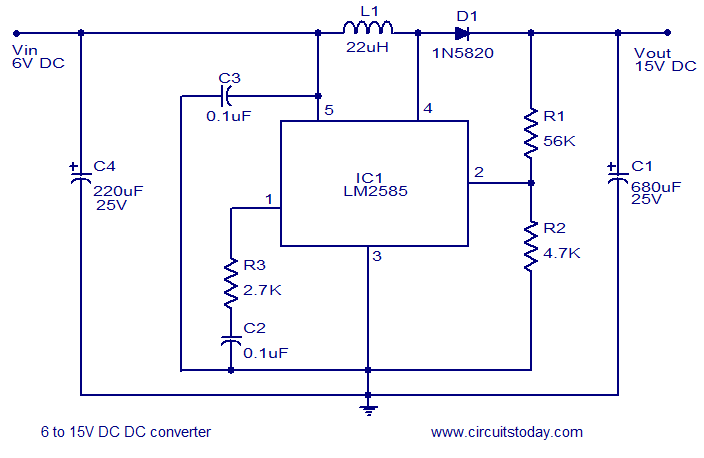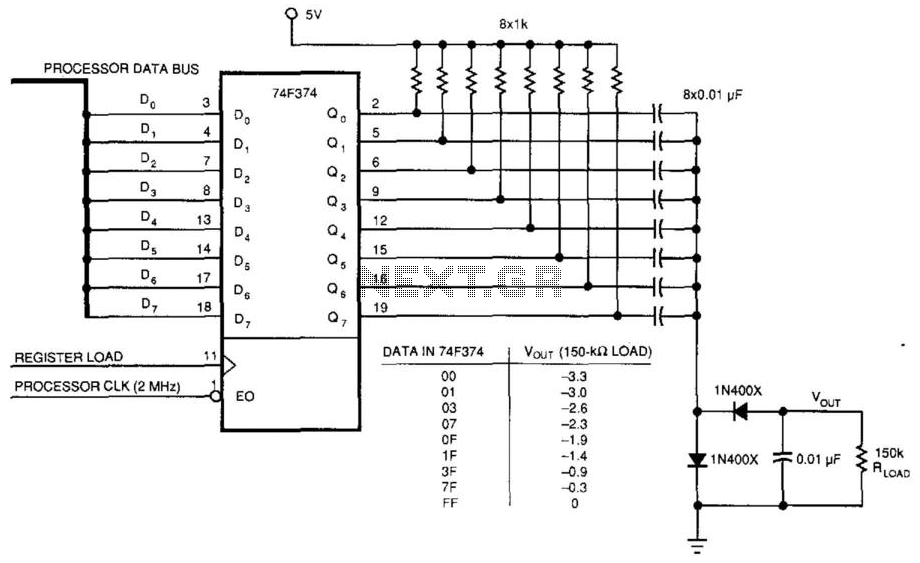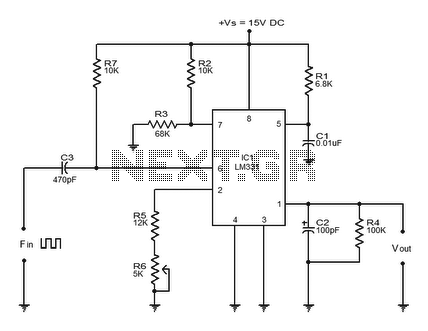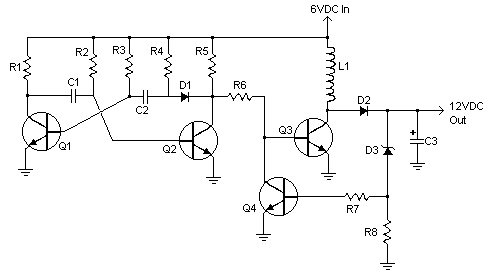
Potentiometer-Position V/F Converter
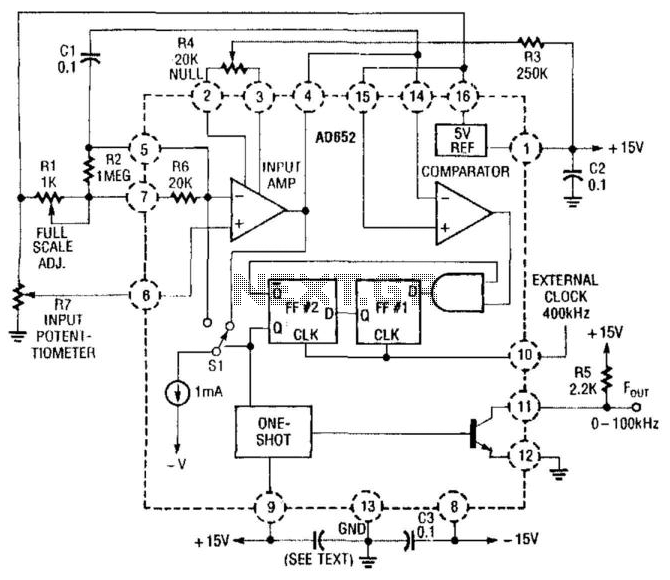
In this application, an AD652 integrated circuit (IC) is utilized in a synchronized voltage-to-frequency (V/F) converter that takes its input from the position of a potentiometer. This setup can represent the position of a mechanical component, weight, size, etc., providing a 0-to-100 kHz output in relation to the 0-to-5 V output from the potentiometer.
The AD652 IC is designed to convert an analog voltage signal into a corresponding frequency signal. In this specific application, the potentiometer serves as a variable resistor, allowing for the adjustment of the input voltage from 0 to 5 V. As the position of the potentiometer is altered, the voltage output changes proportionally, which the AD652 interprets to generate a frequency output that ranges from 0 Hz to 100 kHz.
The circuit typically consists of the AD652 connected to the potentiometer, with the output frequency being measured or utilized in further electronic components or systems. The configuration may include additional passive components such as resistors and capacitors to stabilize the circuit and filter any noise that may affect the accuracy of the frequency output.
To ensure proper functionality, the power supply for the AD652 must be within the recommended voltage range, and the reference voltage should be stable to maintain accuracy in the conversion process. The output frequency can be monitored using a frequency counter or fed into a microcontroller for further processing, enabling applications in various fields such as robotics, automation, and measurement systems where precise position sensing is required.
Overall, the synchronized V/F converter utilizing the AD652 offers a reliable solution for translating analog voltage signals into frequency outputs, making it suitable for a wide range of applications where positional feedback is necessary. In this application, an AD652IC is used in a synchronized V/F converter that derives its input from th e position of a potentiometer. This can represent a position of a mechanical component, weight, size, etc., to give a 0-to-100-kHz output versus the O-to-5-V output from the potentiometer.
The AD652 IC is designed to convert an analog voltage signal into a corresponding frequency signal. In this specific application, the potentiometer serves as a variable resistor, allowing for the adjustment of the input voltage from 0 to 5 V. As the position of the potentiometer is altered, the voltage output changes proportionally, which the AD652 interprets to generate a frequency output that ranges from 0 Hz to 100 kHz.
The circuit typically consists of the AD652 connected to the potentiometer, with the output frequency being measured or utilized in further electronic components or systems. The configuration may include additional passive components such as resistors and capacitors to stabilize the circuit and filter any noise that may affect the accuracy of the frequency output.
To ensure proper functionality, the power supply for the AD652 must be within the recommended voltage range, and the reference voltage should be stable to maintain accuracy in the conversion process. The output frequency can be monitored using a frequency counter or fed into a microcontroller for further processing, enabling applications in various fields such as robotics, automation, and measurement systems where precise position sensing is required.
Overall, the synchronized V/F converter utilizing the AD652 offers a reliable solution for translating analog voltage signals into frequency outputs, making it suitable for a wide range of applications where positional feedback is necessary. In this application, an AD652IC is used in a synchronized V/F converter that derives its input from th e position of a potentiometer. This can represent a position of a mechanical component, weight, size, etc., to give a 0-to-100-kHz output versus the O-to-5-V output from the potentiometer.
